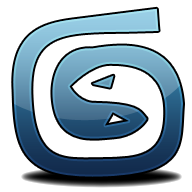
In the 3D industry where time and quality is of utmost importance, it always pays to master the shortcuts in moving around and doing stuff in 3D Studio MAX. Using the drop down menu is fine but when time matters most, keyboard shortcuts lets you work faster and more efficiently. Here are some basic shortcuts that will speed up your workflow. These are just default shortcuts which is standard on all versions of 3DS Max but if you want to customize, there is a way to do it which I will briefly explain in another tutorial. There is a lot of default shortcuts but I will be discussing only the most commonly used once.
1. G (Hide/Unhide Display Grid) – The grid can be very important when modeling and positioning objects or when drawing splines. But the grid at times distracts your view as the scene gets busier, the G button turns it off and on when needed.
2. 7 (Hide/Unhide Statisitics Info) – The Stats Info can be seen on the upper left hand corner of the Max window, it shows the number of polygons and vertices. Being aware as to how heavy your current scene is matters a lot simply because render time depends on these numbers.
3. alt W (Maximize Viewport) - By default there are 4 viewports in a 3D Studio Max window. The top, front, left and perspective view. These are very helpful when modeling objects as you will have all angles to look at. But when you want a bigger view of the objects or the scene, alt W will maximize the viewport you are currently in resulting into a single bigger viewport. Pressing alt W again will bring back the 4 viewports.
4. alt L (Hide/Unhide Lights) – Obviously, you should be able to see the position of the lights for proper lighting of the scene. But as the number of lights increase, or after testing and positioning all of them, keeping the lights visible while doing other stuff will just add to the clutter. Therefore it is handy to keep them hidden until you need to modify your lighting again. Note: Hidden lights render the same as visible lights.
5. alt C (Hide/Unhide Camera) – Having one camera in the scene is fine, but once you work with multiple cameras, hiding them will make your scene less cluttered. This is also very important to avoid accidentally moving the cameras after spending time positioning them properly.
6. M (Material Editor Toggle) – Provides easy access to the Material Eitor slot when needed. Pressing M hides and unhides the Material Editor slot.
7. C (Camera View) - Brings the active viewport to camera view. If you have multiple cameras in the scene, a small pop-up window will let you choose which camera you want your viewport to be.
8. Shift Q, F9 (Quick Render) - When a 3D scene is at the finishing stage, these shortcuts come in handy. Quick renders are often done to check the overall look and feel of the scene in terms of proper lighting, correct material mapping, and optimum render settings.
9. Alt Q (Object isolation) - Modeling and editing objects or materials inside 3D Studion Max is tricky. So imagine a scene which has hundreds of polygons and splines that you have to deal with. Isolating on of these objects make editing very easy. It hides everything else in you view except the object being selected.
10.W, E, R (Move, Rotate, Scale) – Perhaps the most used keyboard shortcuts in 3D Studio Max. Mastering these means faster modeling and manipulation . This may be the reason that by default, they are placed next to each other since moving, rotating, and scaling happens every now and then when using 3D Studio Max.
Mastering 3D Studio Max requires requires a solid foundation of the basics, and knowing these shortcuts by heart is a good first step. These are the default or built-in settings though, 3D Max gives us further control by letting us make our own user defined shortcuts which we are most convenient of.

ConversionConversion EmoticonEmoticon